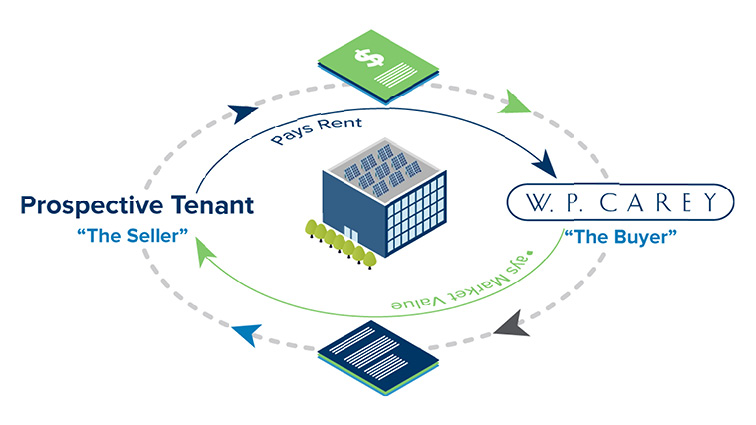Sale-leaseback 101
What it is, why it’s advantageous and when to execute
What is a sale-leaseback?
The concept is simple. For many companies, their real estate represents a significant cash value that could be redeployed to fund their core business operations and growth strategies. Through the “sale and leaseback” model (or sale-leaseback), a company sells its real estate to an investor for cash and simultaneously enters into a long-term lease with the new owner. In doing so, the seller extracts 100% of the property’s value and converts an otherwise illiquid asset into working capital, while maintaining full operational control of the facility.
What are the benefits?
There are many reasons why a company would consider monetizing its owned real estate. Sale-leasebacks offer companies an alternative to traditional bank financing. This is particularly advantageous during periods of uncertainty—as seen during COVID-19 when conventional financing was limited, especially for sub-investment grade companies.
Whether a company is looking to invest in R&D, expand into a new market, fund an M&A transaction or simply de-lever, sale-leasebacks serve as a strategic capital allocation tool to fund both internal and external growth in all market conditions.
Key benefits include:
- Immediate access to capital to reinvest in core business operations and growth initiatives with higher equity returns. We like to say that most businesses are not in the business of owning real estate. A sale-leaseback enables companies to focus on its core competencies, while capitalizing on the value arbitrage between the real estate valuation and the company’s EBITDA multiple.
- 100% market value realization of otherwise illiquid assets compared to the 65% to 75% of the appraised value that a typical mortgage would garner.
- Limited financial covenants, unlike some debt instruments, providing the seller with greater control over its operations.
- Alternative capital source when conventional financing is unavailable or limited.
- Retainment of operational control with no disruption to day-to-day operations.
- Potential tax benefits by deducting rental payments rather than being subject to interest limitations for traditional debt as defined by tax laws.
Why now?
Record level dry power, coupled with today’s low interest rate environment continue to drive investor demand for alternative investments such as real estate, pushing property values to all-time highs. These conditions make now an opportune time for sellers to maximize their proceeds and secure favorably priced, long-term capital via a sale-leaseback before interest rates rise again.

In conclusion
Key to the success of a sale-leaseback arrangement is finding an experienced and well-capitalized investor who can understand the unique requirements of each seller and structure the lease accordingly. When working with an investor like W. P. Carey, sellers have the added advantage of gaining a long-term partner who can support its tenants through long-term flexibility and additional capital should they wish to pursue follow-on projects such as expansions or energy retrofits as their business and real estate needs evolve.
You May Also Like:

- Recently Added
- Thought Leadership
Turning Real Estate into Opportunity: How Sale-leasebacks Fuel Business Growth
In today’s ever-changing macroeconomic landscape, companies are rethinking how they fund growth, maintain liquidity and improve balance sheet strength. One strategy that savvy companies are using is...
Is a Sale-leaseback Right for Your Business?
Economic uncertainty and restricted debt markets are leading more corporate occupiers to explore alternative financing options such as sale-leasebacks to secure funds. In a sale-leaseback, a company...